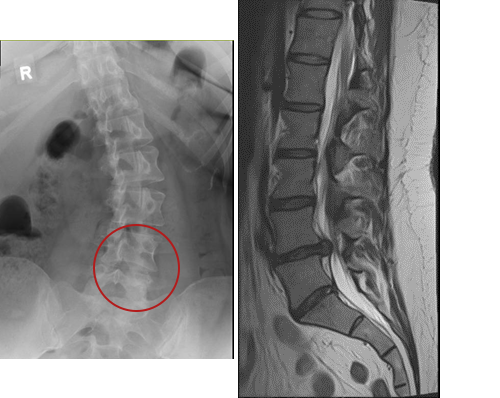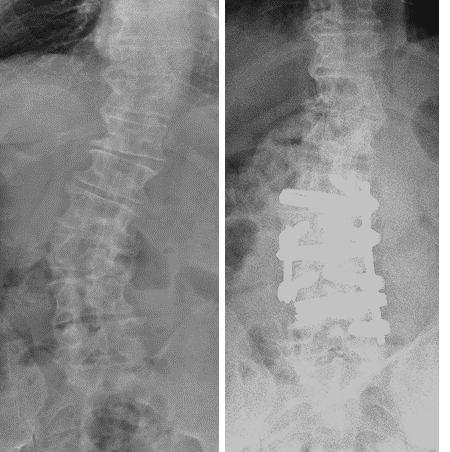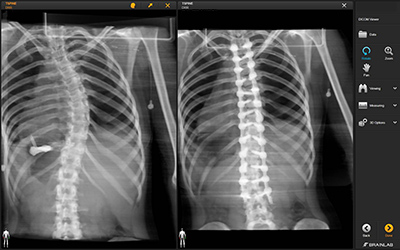It is extremely important to ensure that surgeons treating patients with scoliosis have extensive expertise in treating these conditions. There are three options for treatment of patient with scoliosis: decompression only, short-segment fusion, or long-segment fusion.
The following patient with scoliosis (shown on x-rays on the right) saw one of the experienced scoliosis surgeons at Weill Cornell Medicine, who pinpointed the patient’s symptoms as being caused by a disk herniation (shown on MRI on the left) rather than due to the scoliosis. The patient was offered a minimally invasive microdiscectomy as an outpatient procedure with complete resolution of preoperative symptoms. Repairing the scoliosis through a spinal reconstruction would have put the patient under increased complication risk with no further improvement in symptoms. The surgeon will continue to follow the curve of the scoliosis over time to ensure that the curve does not progress over time.

The following pre-operative and postoperative x-rays are from a patient who underwent a short-segment fusion surgery. He was offered a long-segment fusion by multiple other surgeons before undergoing this minimally invasive short-segment fusion. A short-segment fusion does not straighten the scoliosis as much as a long-segment fusion, but it treats the presumed levels that are causing most of the pain. Performing a short-segment fusion in the appropriate patient maintains more mobility and flexibility in the spine and allows patients to be able to return to their regular activities sooner.

There are times that long-segment fusion is necessary and is the only appropriate treatment for patients with scoliosis. Long-segment fusion is most effective in straightening out a scoliotic curve. These before-and-after X-rays show the dramatic difference surgery can make for a patient with scoliosis. This patient underwent spinal instrumented fusion surgery to correct spinal curvature.


Reviewed by: Osama Kashlan, MD, MPH
Last reviewed/last updated: November 2024